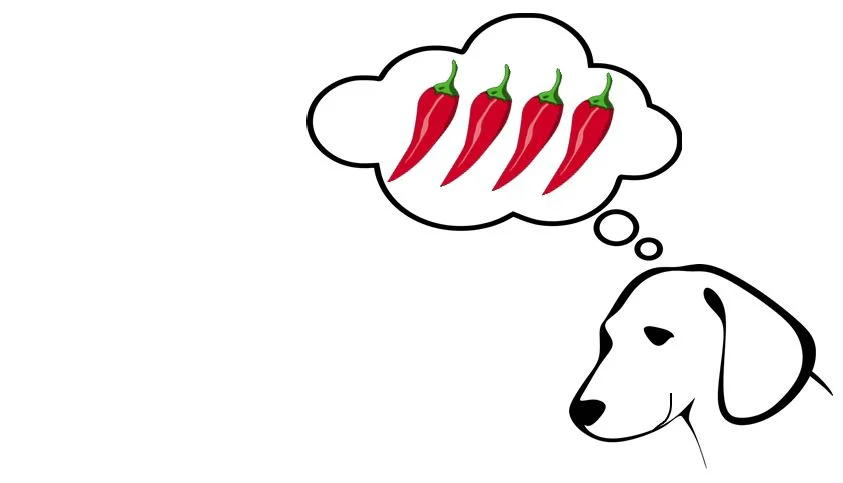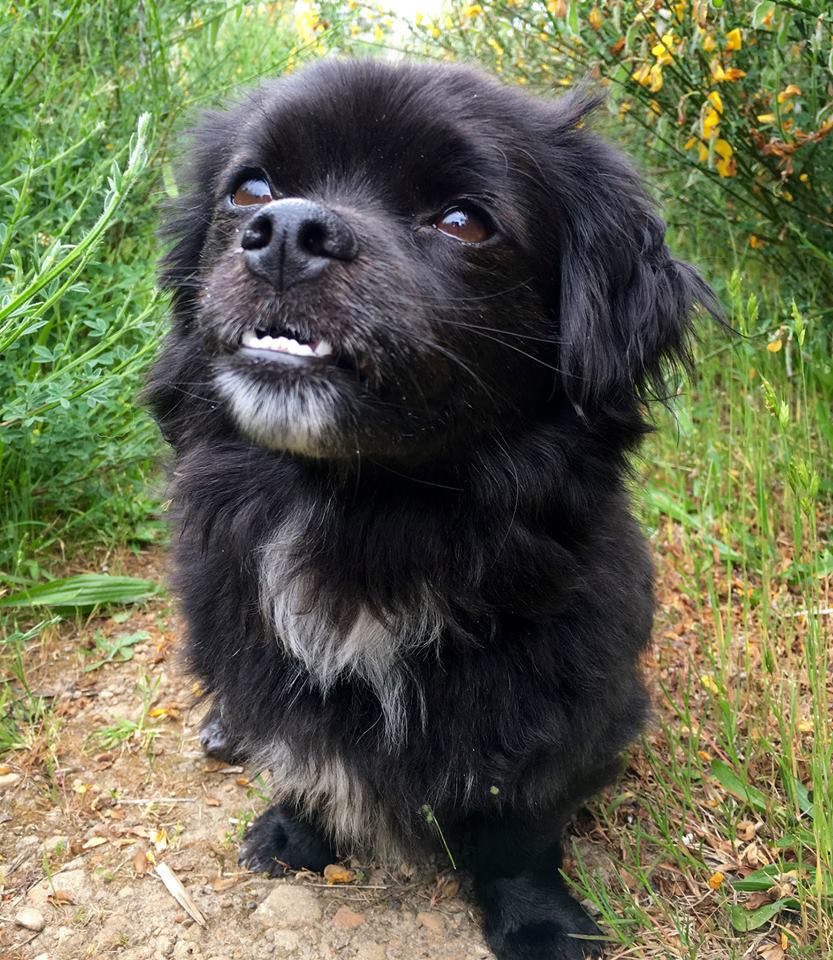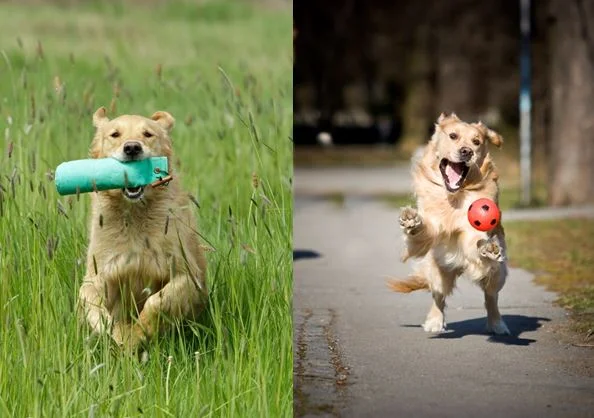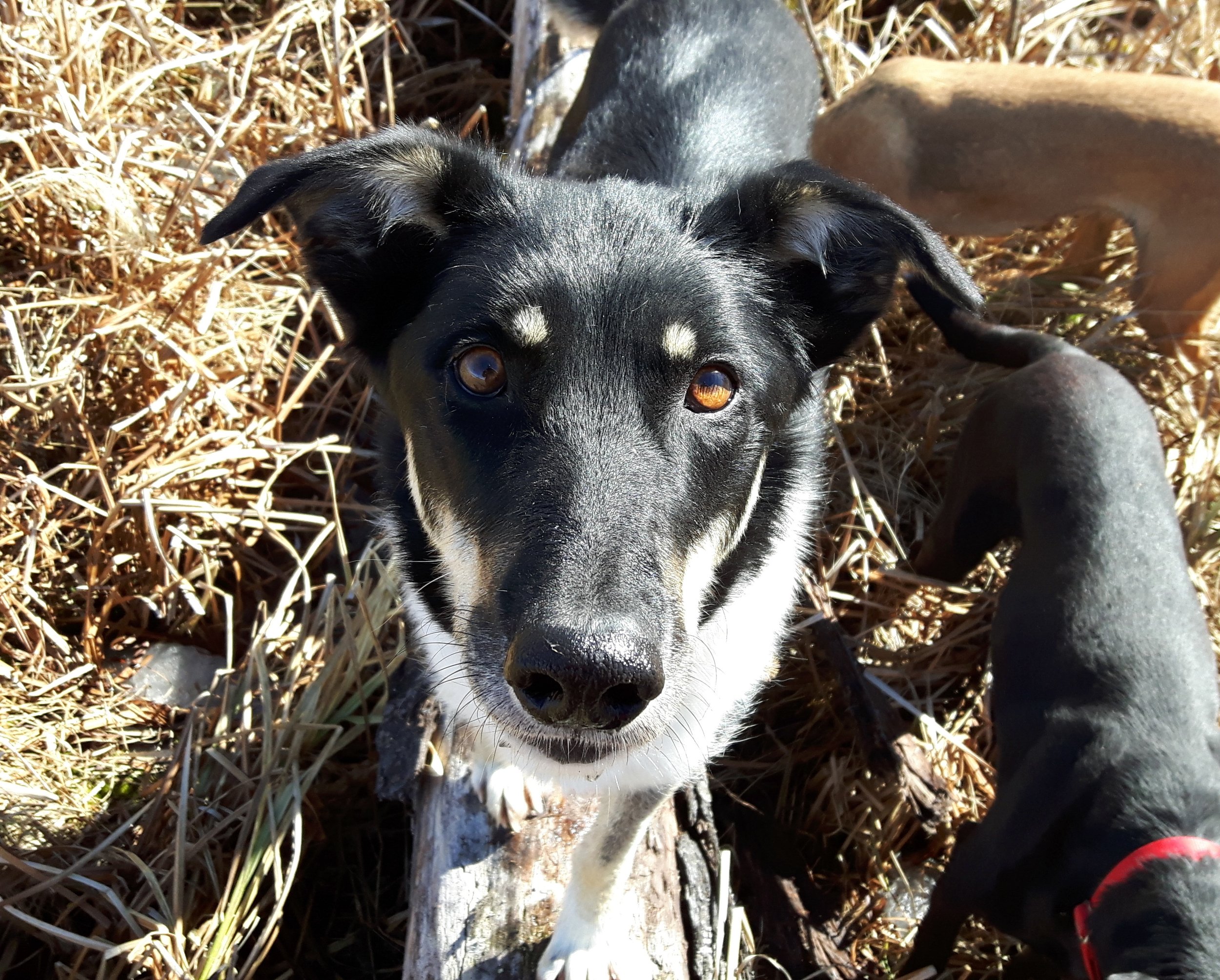There’s a little-known secret about dog trainers, and I’m about to spill it. A secret, I’ll have you know, that might make you feel a whole lot better about the furry tyke in your life.
Dog trainers…we like our dogs spicy.
Not only do we like our dogs spicy in general, we actively enjoy our dogs’ spicy antics. We take photos and share them amongst ourselves. We swap tales of spice. We marvel at our dogs’ communication styles and revel in our dogs’ hilarious and consuming self-involvement.
Well heck, you may be thinking. What is a spicy dog? Imagine for a moment the kind of dog you think a dog trainer would have. Is this imaginary dog laying obediently at the door? As still as a statue? Eyes constantly on the owner, awaiting our next uttered command with bated breath? Does this dog merge with the wallpaper when the owner is busy or bothered or beset with life’s annoyances? Does this dog walk past other dogs without a blink or a sniff, smile gently at guests but never pester or pal around?
Yeah, so…spicy is pretty much the opposite of all that. Spicy dogs feel free to use their natural dog communication skills to set boundaries with other dogs. A little snark there, a blustery bark there. Spicy dogs sometimes protect the goods in their possession. I mean, those goods are in their possession, after all. Spicy dogs push each other off the couch. Spicy dogs approach their human grand-mothers-in-law and ask for butt scratches…even though they rolled in something we’ll just call “fragrant” earlier in the day. Spicy dogs bark when they play, they hump teddy bears, they change their minds, and they eat the heads off their stuffed animals with gleeful (and I do mean gleeful) abandon. Spicy dogs feel comfortable saying no to stuff they’re uncomfortable about. Spicy dogs chase squirrels and spicy dogs dig burrows. Spicy dogs wait until they’re inside to shake off the muddy water, and really spicy dogs wait until they’re adjacent to a white wall to do it.
In short, when it comes to life from a dog’s perspective, spice is...nice. Dogs in spice-friendly homes are allowed to be dogs: as long as no-one (dog or human) is getting harmed or becoming scared, our dogs can simply be dogs.
Now, don’t take this to mean we’re living in mayhem or our dogs are running amok. Dog trainers are obsessed when it comes to making sure our dogs are exercised and enriched, so our dogs tend to do a lot of contented snoozing. We are scrupulous in ensuring that our dogs do not experience fear-evoking events, to the best of our ability. And our dogs aren’t untrained. In fact, they tend to get a lot of training. They get training because training is useful and enriching in itself, and they get training because training helps dogs experience the weird confines of life with humans with joy and ease. And of course, they get training because many spicy dogs need help overcoming fearfulness or with other behaviour issues. But just because our dogs can run to a mat and lay down on it nicely when asked, it doesn’t mean that we expect them to do it for hours on end, when their own interests and motivations say otherwise. And just because our dogs can walk politely past another dog on leash, it doesn’t mean that we don’t let them play hard and fast at other times.
So, you may be looking at your own spicy dog, unconvinced. You may still think that dog trainers’ dogs are much more nicey and much less spicy. I’ve asked some colleagues of mine to weigh in to show you that you don’t have to hide your chortling, gleeful enjoyment of your spicy dog any longer. These colleagues, made up of the cream of the crop of dedicated, brainy, and trainy types, have submitted their own examples of spicy canines to both show you how outrageously full of personality they are and to invite you to revel in the spice of your own dog. In the spirit of we rate dogs, every spicy dog will receive a chilli rating, as well. Click on each picture and hover over them to read more spice-tales than you can shake a jalapeno tree at.




























































